| View previous topic :: View next topic |
| Author |
Message |
John S. White
Site Admin

Joined: 04 Sep 2006
Posts: 1298
Location: Stewartstown, Pennsylvania, USA



|
 Posted: Dec 23, 2008 03:15 Post subject: Photos of epitaxy - (16) Posted: Dec 23, 2008 03:15 Post subject: Photos of epitaxy - (16) |
|
|
Was thinking that it might be interesting to start a thread showing photos of epitaxy. A very simple definition is the condition where one mineral is attached to another in a relationship that is controlled by the mutual crystal structures.
My first contribution to this thread is a photograph of spessartine and apatite in which the 3-fold axis of the spessartine is parallel to the 6--fold axis of the apatite.
| Description: |
This neat specimen is from Shengus, Haramosh Mtns, Northern Areas, Pakistan and is about 3.5 cm high.
Jeff Fast photo. |
|
| Viewed: |
98268 Time(s) |
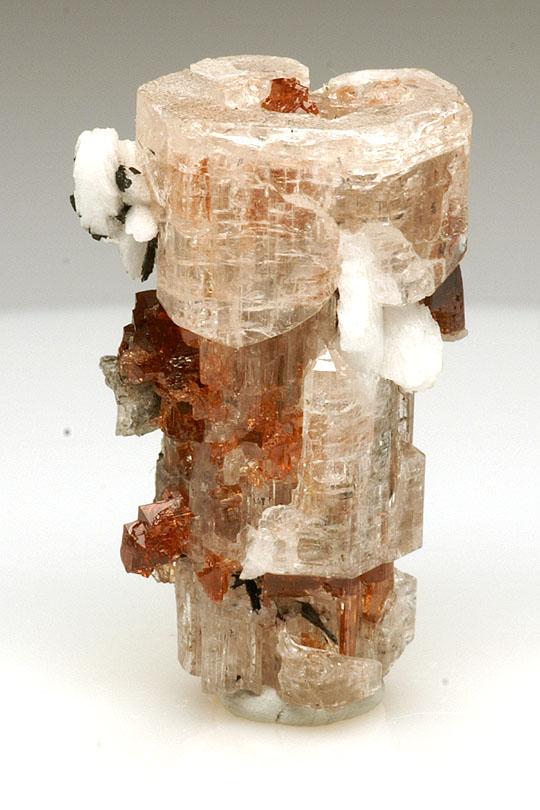
|
_________________
John S. White
aka Rondinaire |
|
| Back to top |
|
 |
parfaitelumiere
Joined: 02 Mar 2008
Posts: 153
Location: Auvergne



|
 Posted: Dec 23, 2008 03:33 Post subject: Re: Photos of epitaxy - (16) Posted: Dec 23, 2008 03:33 Post subject: Re: Photos of epitaxy - (16) |
|
|
Good idea!
Here are some twins of arsenopyrite on pyrite!
Many years ago I had a good cumengite on boleite, with paratacamite...
| Description: |
Epitaxial arsenopyrite on pyrite,on chalcopyrite,calcite.
8cm
Panasqueira beira beixa
Portugal |
|
| Viewed: |
98245 Time(s) |
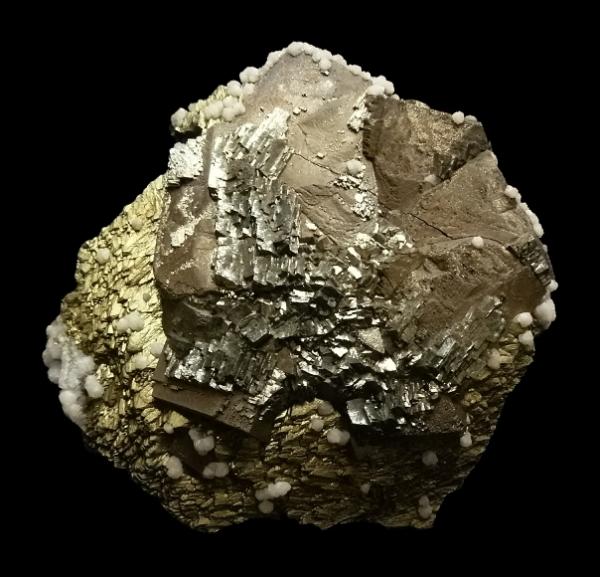
|
|
|
| Back to top |
|
 |
parfaitelumiere
Joined: 02 Mar 2008
Posts: 153
Location: Auvergne



|
 Posted: Dec 23, 2008 03:39 Post subject: Re: Photos of epitaxy - (16) Posted: Dec 23, 2008 03:39 Post subject: Re: Photos of epitaxy - (16) |
|
|
Here is a picture to show how it grows through the pyrite crystal.
The arsenopyrite does the same on other axes, but I can't draw it, because I have not the specimen in the hand!
| Description: |
| how it grows through the pyrite crystal! |
|
| Viewed: |
98249 Time(s) |
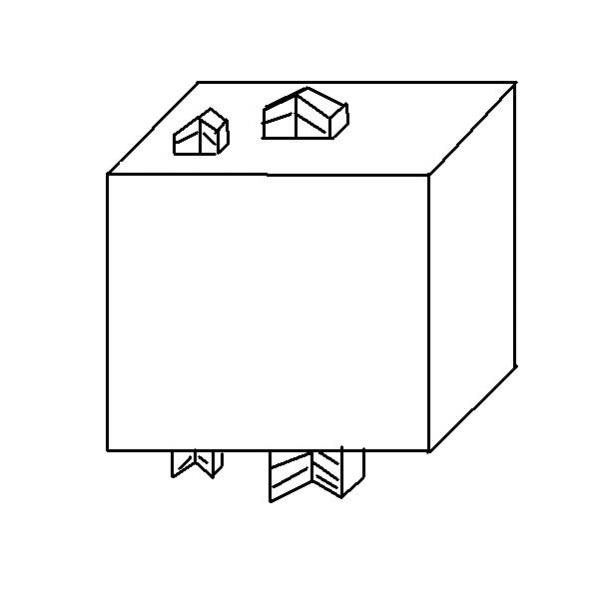
|
|
|
| Back to top |
|
 |
Jordi Fabre
Overall coordinator of the Forum

Joined: 07 Aug 2006
Posts: 5110
Location: Barcelona



|
 Posted: Dec 23, 2008 10:43 Post subject: Re: Photos of epitaxy - (16) Posted: Dec 23, 2008 10:43 Post subject: Re: Photos of epitaxy - (16) |
|
|
This is my contribution to this fascinating topic.
(More info about the Rutile-Ilmenite-Hematite from Zambia here: https://www.mineral-forum.com/message-board/viewtopic.php?t=155 )
(More info about the Rutile-Hematite from Brazil here: https://www.fabreminerals.com/specimens/RSBR-brazil-notable-specimens.php#EJ26F4 )
| Description: |
Epitaxial growth of red brilliant twinned Rutile on a tabular former Ilmenite crystal pseudomorphed by Rutile and Hematite. The former Ilmenite is showing well-marked geometrical forms.
Mwinilunga, Zambia
Mined in May 2007
Specimen size: 5.6 × 2.9 × 1.5 cm.
Photo: Reference Specimens ( http://www.fabreminerals.com/specimens/RSAFR-africa-notable-specimens.php#MG62K7 ) |
|
| Viewed: |
98241 Time(s) |
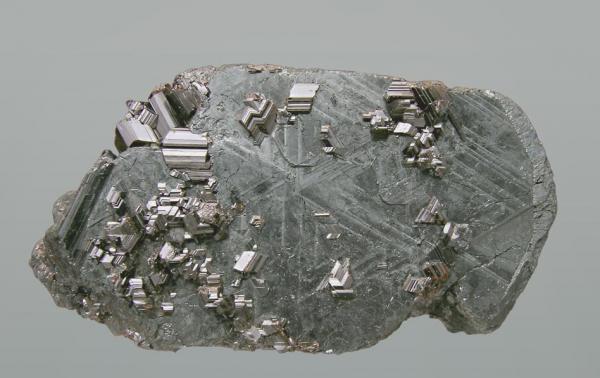
|
| Description: |
The crystals of Rutile have grown epitaxially on tabular Hematite.
Novo Horizonte, Bahía, Brazil.
Mined in February 2004
Specimen size: 2.8 × 2.4 × 0.2 cm.
Photo: Reference Specimens ( http://www.fabreminerals.com/specimens/RSBR-brazil-notable-specimens.php#EJ26F4 ) |
|
| Viewed: |
98345 Time(s) |
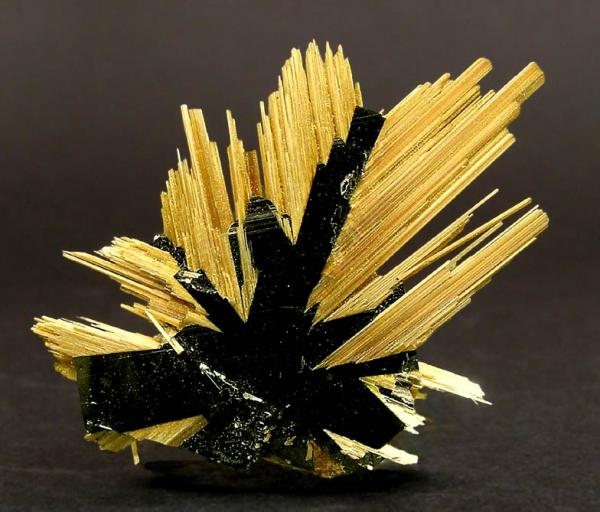
|
|
|
| Back to top |
|
 |
Jojm
Joined: 27 Dec 2008
Posts: 6
Location: Deux-Sèvres



|
 Posted: Dec 27, 2008 15:56 Post subject: Re: Photos of epitaxy - (16) Posted: Dec 27, 2008 15:56 Post subject: Re: Photos of epitaxy - (16) |
|
|
Hi all,
This is my first contribution to this English forum.
As English is not my native language, please be lenient towards my future mistakes or misspellings.
I'm living in th west of France, not far from Nantes. I'm a microminerals collector and photographer.
Uranium minerals and more widely phosphates are my favorite subjects.
Very interesting thread, following Jordi message about rutile and hematite, a sample from Saint-Chistophe-en-Oisans and a second one from Boucheron mine.
Jean-Marc.
| Description: |
Metatorbernite, meta-autunite.
Le Boucheron
FOV: 3mm |
|
| Viewed: |
98129 Time(s) |
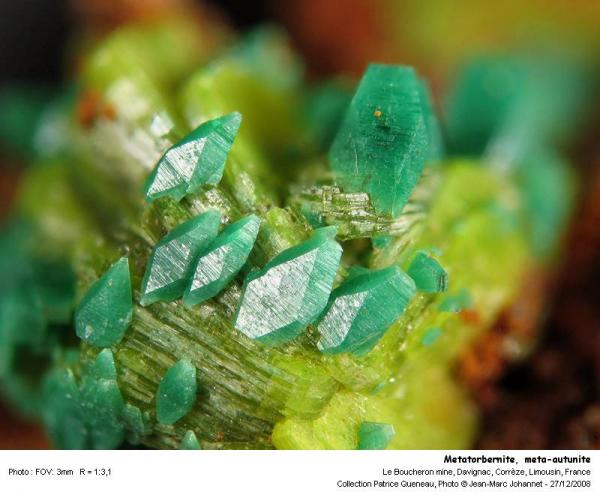
|
| Description: |
Rutile, hématite.
Saint-Christophe-en-Oisans
FOV: 6mm |
|
| Viewed: |
98043 Time(s) |
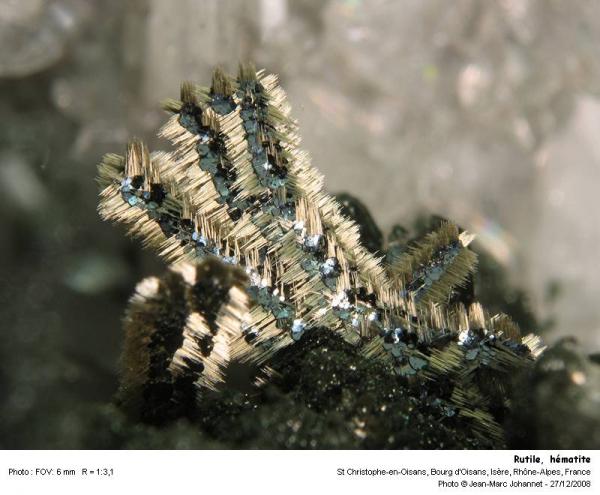
|
|
|
| Back to top |
|
 |
Jordi Fabre
Overall coordinator of the Forum

Joined: 07 Aug 2006
Posts: 5110
Location: Barcelona



|
 Posted: Dec 27, 2008 17:07 Post subject: Re: Photos of epitaxy - (16) Posted: Dec 27, 2008 17:07 Post subject: Re: Photos of epitaxy - (16) |
|
|
Wonderful images Jean-Marc, thank you for sharing them with us!
Jean-Marc Johannet is a well-known French photographer. His work is frequently published in French magazines (and others), we are lucky to have him here publishing their photos.
Jordi
|
|
| Back to top |
|
 |
parfaitelumiere
Joined: 02 Mar 2008
Posts: 153
Location: Auvergne



|
 Posted: Dec 28, 2008 05:06 Post subject: Re: Photos of epitaxy - (16) Posted: Dec 28, 2008 05:06 Post subject: Re: Photos of epitaxy - (16) |
|
|
| really interesting thing here!
|
|
| Back to top |
|
 |
Gail

Joined: 21 Feb 2008
Posts: 5839
Location: Texas, Lone Star State.



|
 Posted: Dec 28, 2008 08:59 Post subject: Re: Photos of epitaxy - (16) Posted: Dec 28, 2008 08:59 Post subject: Re: Photos of epitaxy - (16) |
|
|
Jean-Marc, Thank you for the incredible photographs! I have been in Nantes a few times and love the area where you live. Please continue to share your amazing photographs?
All the best!
_________________
Minerals you say? Why yes, I'll take a dozen or so... |
|
| Back to top |
|
 |
Michael Shaw
Site Admin
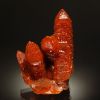
Joined: 30 Apr 2008
Posts: 2270
Location: Oklahoma



|
 Posted: Dec 28, 2008 11:52 Post subject: Re: Photos of epitaxy - (16) Posted: Dec 28, 2008 11:52 Post subject: Re: Photos of epitaxy - (16) |
|
|
This specimen consists of marcasite epitaxial on pyrite from the Rensselaer Quarry, in Jasper County, Indiana.
| Description: |
|
| Viewed: |
98004 Time(s) |
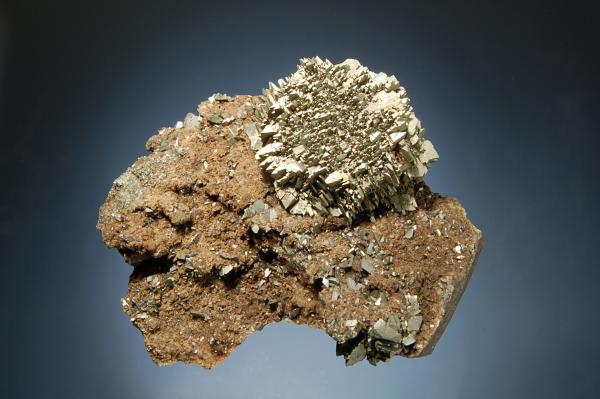
|
|
|
| Back to top |
|
 |
Jojm
Joined: 27 Dec 2008
Posts: 6
Location: Deux-Sèvres



|
 Posted: Dec 28, 2008 14:44 Post subject: Re: Photos of epitaxy - (16) Posted: Dec 28, 2008 14:44 Post subject: Re: Photos of epitaxy - (16) |
|
|
Gail, Jordi,
Thank you for your kind comments.
A less described epitaxy growth, smithsonite on dolomite.
| Description: |
Smithsonite, dolomite.
Saint-Félix-de-Paillères, Gard, France
FOV: 3mm |
|
| Viewed: |
98003 Time(s) |
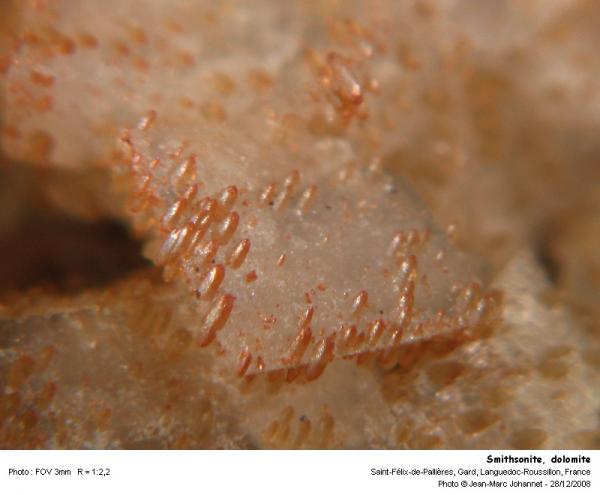
|
|
|
| Back to top |
|
 |
Tracy

Joined: 15 Sep 2006
Posts: 551
Location: Toronto



|
 Posted: Dec 28, 2008 14:52 Post subject: Re: Photos of epitaxy - (16) Posted: Dec 28, 2008 14:52 Post subject: Re: Photos of epitaxy - (16) |
|
|
These photos are amazing!
- Tracy
_________________
"Wisdom begins in wonder" - Socrates |
|
| Back to top |
|
 |
Joseph Taggart
Joined: 01 Nov 2008
Posts: 4
Location: Littleton, Colorado


|
 Posted: Jan 05, 2009 01:36 Post subject: Re: Photos of epitaxy - (16) Posted: Jan 05, 2009 01:36 Post subject: Re: Photos of epitaxy - (16) |
|
|
This is my contribution of photographs of a specimen demonstrating epitaxy.
The specimen shown is two crystals of sphalerite with an epitaxially controlled coating of chalcopyrite crystals from Joplin, Missouri. One photo shows the "front" of the specimen, showing the parallel orientation of the chalcopyrite crystals- by the light reflecting simultaneously off all the chalcopyrite crystals growing on the larger sphalerite crystal on the right. The other photograph is the "back" of the specimen showing the enclosed sphalerite crystals (largest crystal again located on the right) .
Size of specimen is 2 1/4" x 1 3/4" x 1 1/4". I purchased the specimen in Joplin, Missouri, in August of 1971.
| Description: |
| "Front" of specimen showing epitaxial over growth of chalcopyrite on sphalerite crystals. |
|
| Viewed: |
97869 Time(s) |
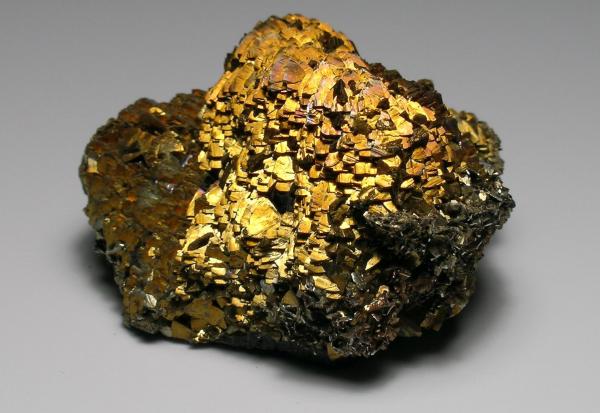
|
| Description: |
| "Rear" of specimen showing enclosed sphalerite crystals. |
|
| Viewed: |
97789 Time(s) |
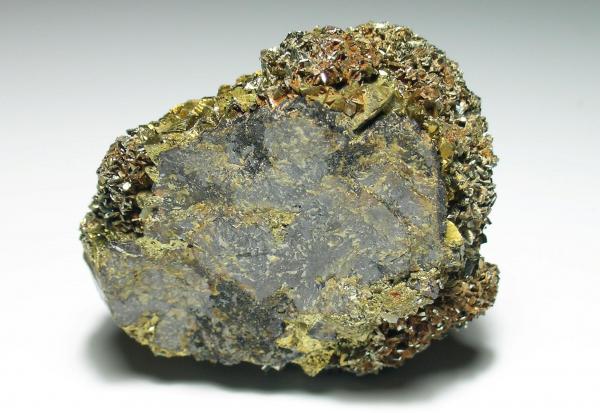
|
_________________
"Buy and use a good mineral book."
Neal Yedlin |
|
| Back to top |
|
 |
vic rzonca

Joined: 18 Nov 2008
Posts: 820
Location: MA



|
 Posted: Jan 05, 2009 08:03 Post subject: Re: Photos of epitaxy - (16) Posted: Jan 05, 2009 08:03 Post subject: Re: Photos of epitaxy - (16) |
|
|
| Does epitaxy relate to different minerals growing together and/or the same mineral that changes habit or orientation in the same specimen?
|
|
| Back to top |
|
 |
John S. White
Site Admin

Joined: 04 Sep 2006
Posts: 1298
Location: Stewartstown, Pennsylvania, USA



|
 Posted: Jan 05, 2009 09:07 Post subject: Re: Photos of epitaxy - (16) Posted: Jan 05, 2009 09:07 Post subject: Re: Photos of epitaxy - (16) |
|
|
Vic, I think you will find that the classic definitiion of epitaxy requires that the two crystals be different species. Habit changes with just one mineral during growth are quite common and if these were to be included it certainly would dilute the meaning of epitaxy. For my purposes I shall limit the definition to one mineral being non-randomly attached to another mineral. I hope everyone agrees.
_________________
John S. White
aka Rondinaire |
|
| Back to top |
|
 |
Pete Richards
Site Admin
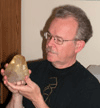
Joined: 29 Dec 2008
Posts: 846
Location: Northeast Ohio



|
 Posted: Jan 05, 2009 10:41 Post subject: Re: Photos of epitaxy - (16) Posted: Jan 05, 2009 10:41 Post subject: Re: Photos of epitaxy - (16) |
|
|
While I think John White's working definition of epitaxy as requiring two phases is useful for guiding this thread, I disagree, John, with your restriction from the larger context of studying epitaxy. I have argued in the past, and continue to believe, that the term can appropriately be extended to include the overgrowth of one mineral on itself. However, this is only useful if the texture of the assemblage provides strong evidence that there were two distinct stages of growth (as opposed to merely a change in the habit). Examples include multiple cube-octahedral galena crystals attached to a first generation galena with cube habit, calcite growing in very distorted shapes from spots along the edges of first-generation crystals, and calcite growing in twinned orientation as many tiny parallel "teeth" on a first generation crystal. I suppose the Mariposa calcites from Mexico, part of another recent thread, would also be an example.
_________________
Collecting and studying crystals with interesting habits, twinning, and epitaxy |
|
| Back to top |
|
 |
|





